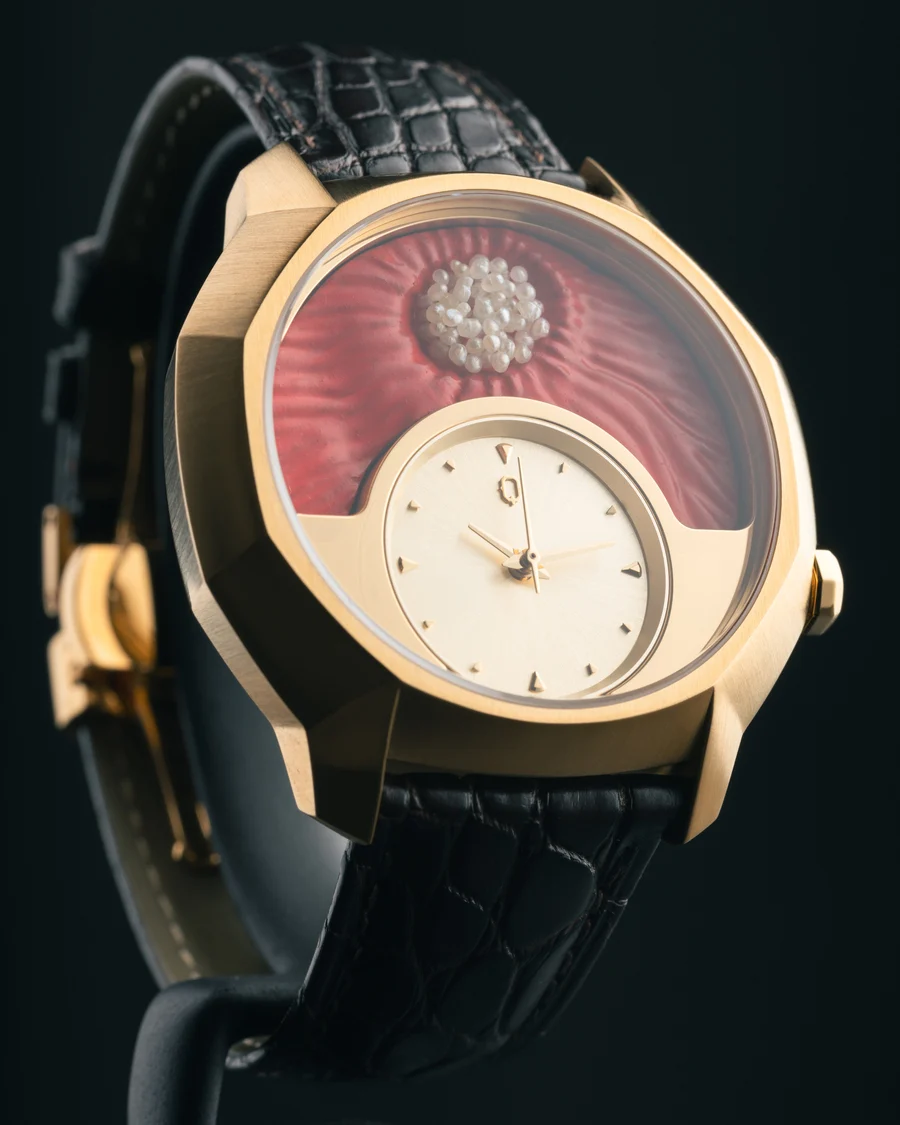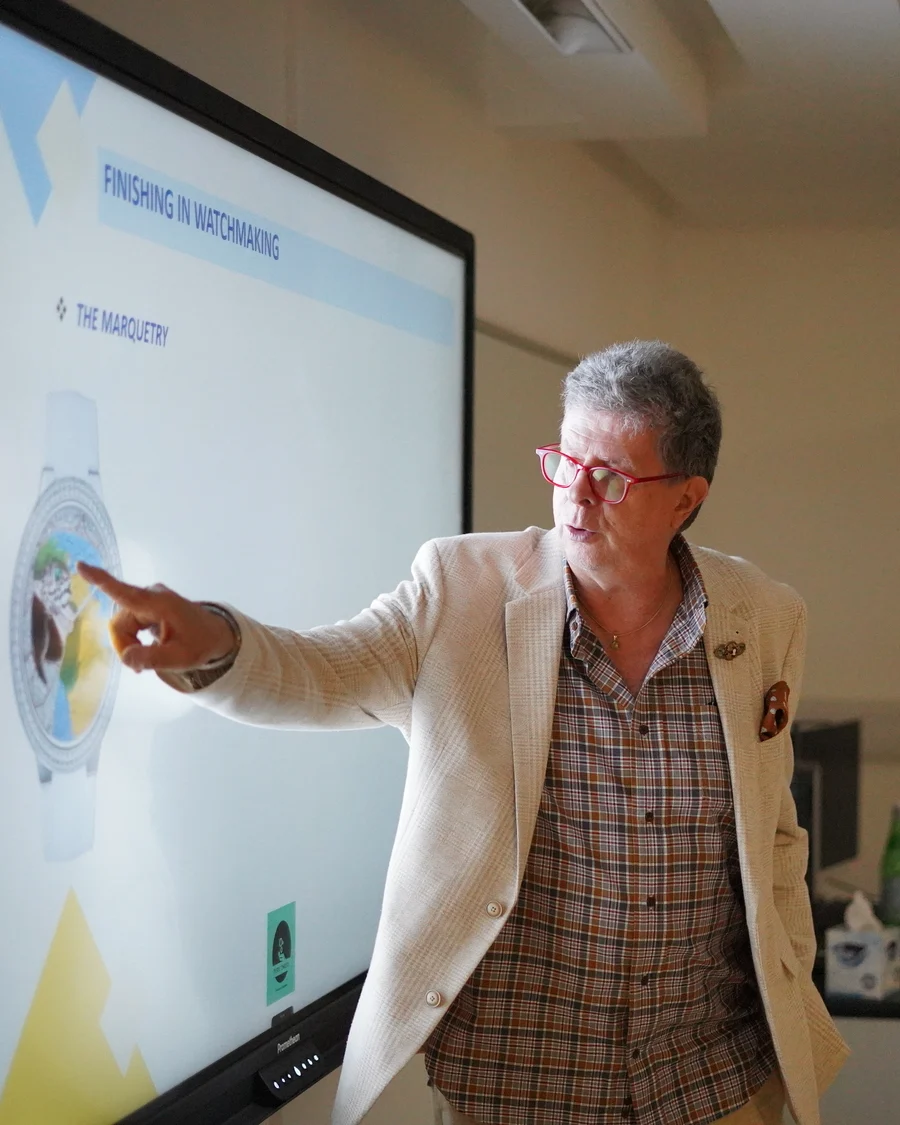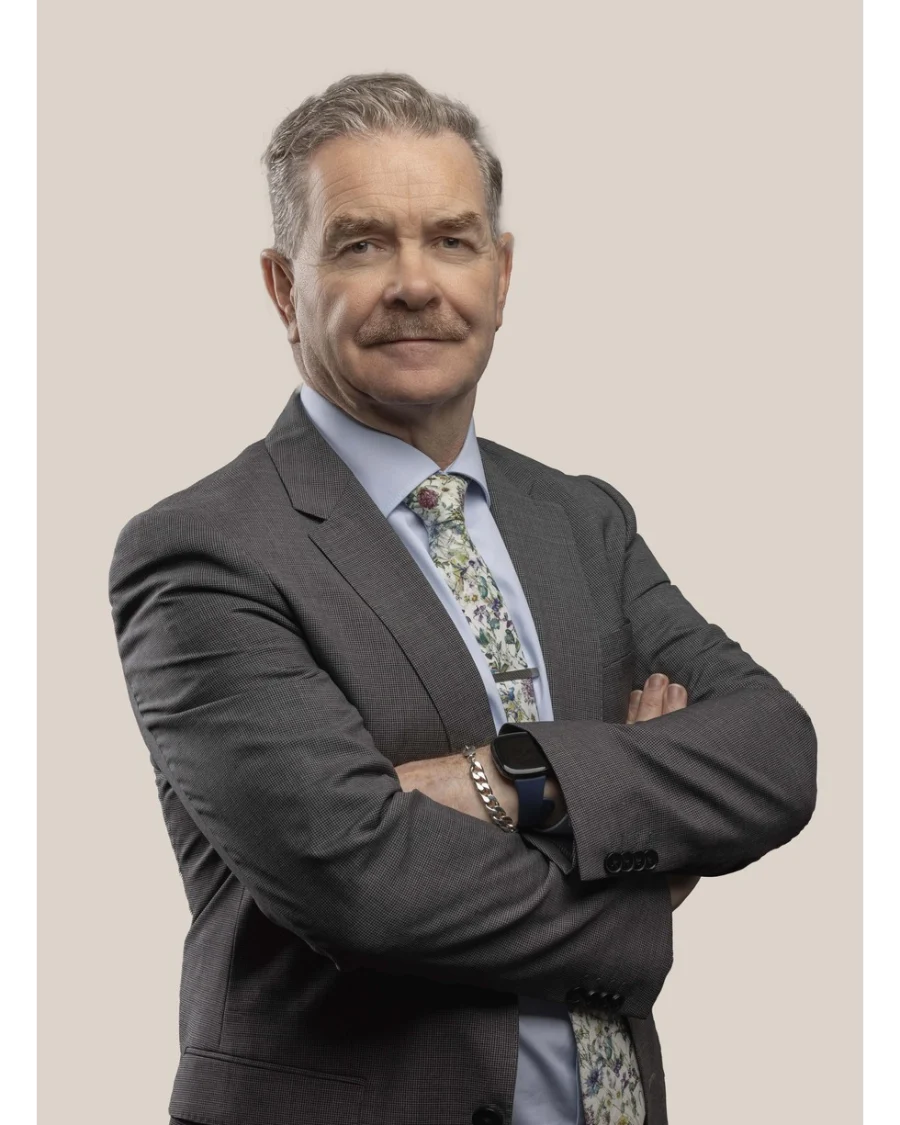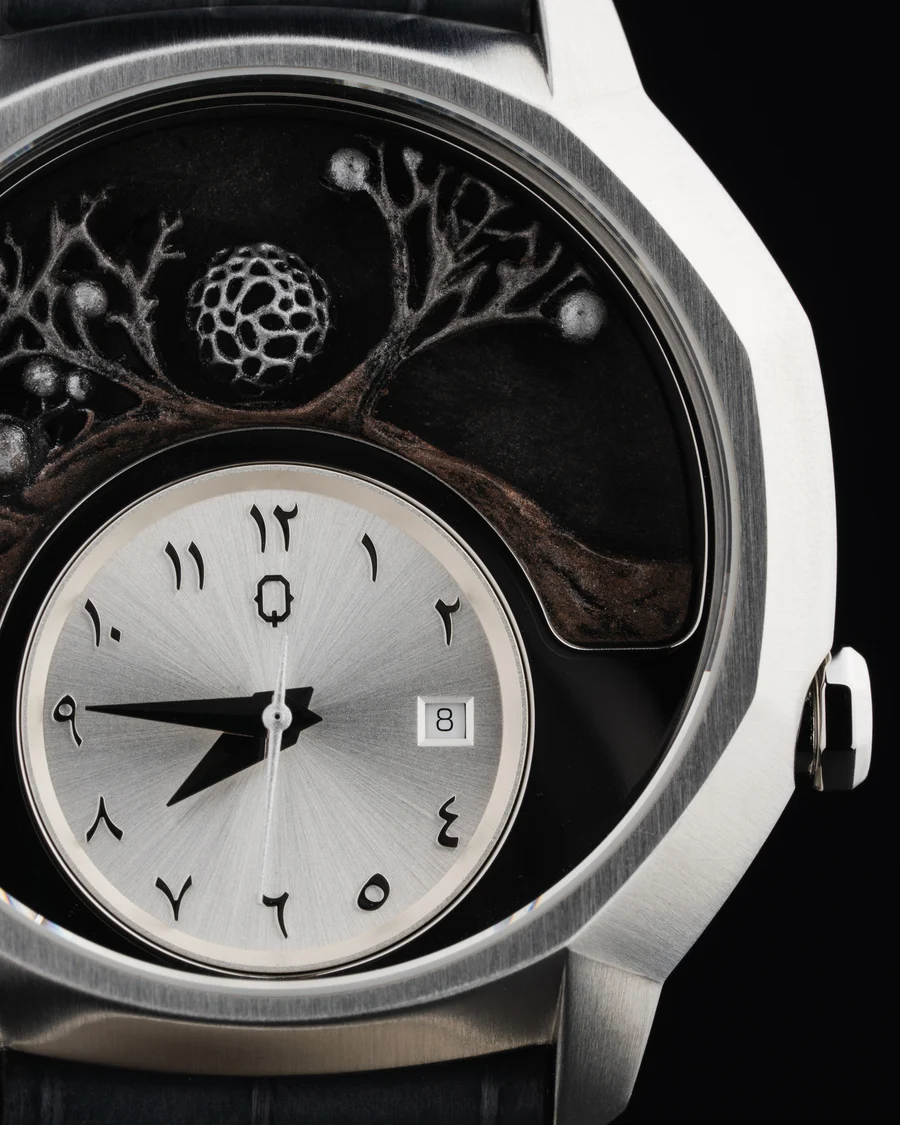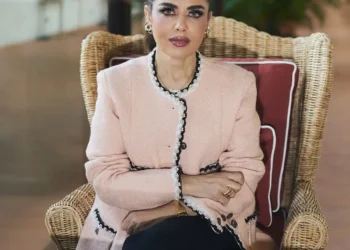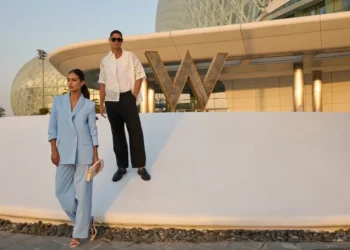INTERVIEW WITH MAHMOOD QANNATI,
QANNATI OBJET D’ART FOUNDER
WHAT WAS THE INITIAL VISION BEHIND ESTABLISHING QANNATI LAB HERE IN BAHRAIN AS A DEDICATED SPACE FOR HOROLOGY AND LUXURY PROTOTYPING IN THE GCC?
From the moment I began building Qannati Objet d’Art in 2018, I felt a contradiction: the Gulf is one of the world’s most enthusiastic markets for fine mechanical watches, yet there was nowhere in the region where a curious young engineer could actually put a movement on a bench, disassemble it, and learn to re-assemble it to Swiss tolerances. Collectors here routinely fly their pieces to Switzerland for servicing, and aspiring watchmakers have had to leave the Middle East altogether to study. That gap bothered me because it quietly exports both our talent and the value-added jobs that go with it. The vision for Qannati Lab was to reverse that flow, to make Manama the place where Gulf creativity, Bahraini heritage, and Swiss precision meet under one roof. Bahrain Polytechnic proved the perfect academic partner. We agreed early on that this wouldn’t be a single elective tacked onto an engineering program, but a physical environment that feels like “Lausanne meets Silicon Valley”, rows of laser machines and staking tools on one side, high-resolution 3D printers and CNC micro-mills on the other, all tied together by an AI-assisted design studio. In our first intake, 120 students chased 24 evening seats that carried no academic credit and plenty of homework. Ninety-five percent stayed to the end. That commitment told us we had tapped a genuine hunger to build with one’s hands at a microscopic scale and to tell local stories through objects of lasting value. Today, Qannati Lab is the region’s first formal pathway where a Bahraini student can learn to pivot between micro- mechanics, generative-design algorithms, and luxury storytelling without boarding a flight to Europe. My longer-term ambition is to let the Lab serve as an anchor for a broader “modern artisanship” ecosystem in the Gulf: a place where precision craft, digital fabrication, and business incubation feed each other. If Switzerland can build a CHF-25-billion export sector on the backs of small workshops, why shouldn’t Bahrain stake out its own niche at the intersection of heritage and innovation?
YOU’VE BROUGHT IN SWISS MASTER WATCHMAKER PIERRE CHRISTE FOR A RESIDENCY. WHAT SPECIFIC ADVANCEMENTS OR NEW PERSPECTIVES DO YOU HOPE HIS PRESENCE WILL BRING TO THE BURGEONING HOROLOGY SCENE IN THE REGION?
Pierre is more than a visiting instructor, he is living institutional memory of modern Swiss watchmaking. He spent decades at Bulgari, WOSTEP and later advised the Fondation de la Haute Horlogerie on curriculum design. Inviting him to Bahrain is a deliberate transfer of standards rather than a one-off masterclass. During the first week of his residency he recalibrated every screwdriver, tweezed hairsprings under our Leica scopes, and rewrote our quality-control flow so that a student-built movement must now pass the same chronometric tests used in Neuchâtel. His engagement will lift our workshop from “good regional lab” to “meets Swiss spec.” The real magic, though, happens when he sits shoulder to shoulder with students during advanced complication sessions while students presenting their bold watch designs. That’s precisely the leap we need in the Gulf: not just learning the craft but daring to push it forward. Pierre is also mentoring me so that the entire faculty can carry the program without external help.
HOW DOES THE WORK DONE AT QANNATI LAB DIRECTLY INFLUENCE OR COMPLEMENT THE UNIQUE DESIGN PHILOSOPHY OF QANNATI OBJET D’ART, WHICH BLENDS HERITAGE WITH INNOVATION?
Qannati Objet d’Art stands for “wearable history, engineered for tomorrow.” Qannati Lab is the crucible where this philosophy is practiced. Every creation begins as a narrative, from the ancient Mesopotamian symbolism of the Flower of Life to Bahrain’s rich pearling history. In addition to teaching students at Polytechnic, the lab is an innovation hub for Qannati. It is a place to translate inspirations into technical forms: through parametric modeling, generative AI, and micron- precision prototyping. The soul of the creations: their stories, geometry, and early prototypes, are forged in Bahrain. That Bahraini provenance is intrinsic, not decorative. It manifests in the form, structure, and symbolism of the final pieces. This transcontinental pipeline doesn’t dilute identity; it amplifies it. Our collectors understand that their objet d’art carries a narrative that started on the shores of Dilmun and was perfected across continents. It is a new model of luxury, rooted in cultural legitimacy and technical daring.
QANNATI OBJET D’ART IS GAINING INTERNATIONAL RECOGNITION. HOW DOES THIS COLLABORATION WITH A RESPECTED FIGURE IN SWISS WATCHMAKING CONTRIBUTE TO BAHRAIN’S GROWING REPUTATION IN THE GLOBAL LUXURY MARKET?
Luxury is built on authenticity, and authenticity is validated by credibility. The regular collaboration with Swiss master watchmaker Pierre Christe sends a clear message: Bahrain is not emulating global standards. We are shaping our own while meeting the highest benchmarks. His periodic presence and technical supervision help assure the industry that what is being built in Bahrain meets global expectations. This credibility has garnered international attention. In April, The New York Times highlighted the Qannati Lab initiative, recognizing its pioneering role in establishing the first watch manufacturing facility in the GCC. In essence, this initiative does not only elevate Qannati, it elevates Bahrain as a new center of luxury and technical excellence in the Gulf.
BEYOND THE CREATION OF TIMEPIECES, WHAT ROLE DO YOU SEE QANNATI LAB PLAYING IN FOSTERING CULTURAL EXPRESSION AND THE DEVELOPMENT OF CREATIVE INDUSTRIES WITHIN THE REGION?
We believe a watch movement is the world’s smallest stage, and Qannati Lab is where culture, engineering, and entrepreneurship share that stage. The Lab draws students from diverse fields such as engineering, marketing, and human resources, creating a rich multidisciplinary environment. This cross-pollination of expertise fosters novel approaches to watchmaking, storytelling, and product innovation. Each semester culminates in a public showcase where finished prototypes are displayed alongside the cultural artifact or story that inspired them. It transforms intangible heritage into physical legacy, strengthening Bahrain’s soft power. Ultimately, at Qannati Lab we aim to train modern artisans who can straddle tradition and innovation, craft and code, local history and global luxury. We see it as the beginning of a movement, not just an institution.
INTERVIEW WITH PIERRE CHRISTE,
SWISS MASTER INSTRUCTOR
HAVING SPENT OVER FOUR DECADES TRAINING PROFESSIONALS IN THE INTRICACIES OF SWISS WATCHMAKING, WHAT ARE YOUR EARLY OBSERVATIONS OF THE TALENT AND DEDICATION YOU’VE ENCOUNTERED AT QANNATI LAB IN BAHRAIN?
I’ve been genuinely impressed by the enthusiasm, passion, and attention to detail exhibited by the students at Qannati Lab. There’s a clear dedication to mastering the craftsmanship, and their eagerness to learn reflects a promising future for watchmaking talent in Bahrain and the wider Gulf region.
AS SOMEONE DEEPLY EXPERIENCED IN THE STANDARDS OF HAUTE HORLOGERIE, WHAT KEY SKILLS AND KNOWLEDGE ARE YOU FOCUSED ON SHARING WITH THE STUDENTS DURING YOUR TIME HERE?
My primary focus during my residency at Qannati Lab revolves around instilling the fundamental principles of Haute Horlogerie: precision, patience, attention to detail, and an unwavering commitment to quality. Specifically, I’m emphasizing the mastery of essential techniques such as assembly and disassembly of complex automatic movements, fine-tuning and calibration, and meticulous hand-finishing.
CONSIDERING YOUR EXTENSIVE EXPERIENCE WITH ESTABLISHED LUXURY GROUPS, WHAT UNIQUE OPPORTUNITIES AND POTENTIAL CHALLENGES DO
YOU FORESEE IN CULTIVATING A NEW GENERATION OF SKILLED WATCHMAKERS IN THE GULF REGION?
Having worked extensively within established luxury groups, I see immense opportunity in the Gulf region, particularly due to its rich cultural heritage, economic strength, and enthusiasm for luxury craftsmanship. However, the primary challenge lies in establishing a robust educational infrastructure and ensuring continuous skill development to meet global luxury standards. Encouraging collaboration and exchange between regional talent and established Swiss institutions will be key.
WHAT ARE YOUR THOUGHTS ON QANNATI OBJET D’ART’S APPROACH OF INTEGRATING FRENCH TECHNIQUES WITH THE RICH CULTURAL HISTORY OF MESOPOTAMIA IN THEIR WATCH DESIGNS?
Qannati Objet d’Art’s approach is genuinely inspiring. This fusion not only distinguishes their timepieces in the global luxury market but also contributes significantly to preserving and celebrating regional history and identity through meticulous artisanal craftsmanship.
LOOKING TO THE FUTURE, WHAT POTENTIAL DO YOU BELIEVE BAHRAIN HAS TO BECOME A NOTABLE CENTER FOR WATCHMAKING EXPERTISE AND INNOVATION?
Bahrain has considerable potential to emerge as a notable center for watchmaking expertise, particularly given its strategic location, cultural appreciation for artisanal luxury, and growing investment in vocational education. With initiatives like Qannati Lab paving the way, coupled with ongoing international collaboration, Bahrain could very well become a prominent hub for horological innovation and craftsmanship in the region.
INTERVIEW WITH CIARÁN Ó. CATHÁIN,
BAHRAIN POLYTECHNIC CEO
HOW DOES THE ESTABLISHMENT OF QANNATI LAB AND THIS PARTNERSHIP WITH QANNATI OBJET D’ART ALIGN WITH BAHRAIN POLYTECHNIC’S CORE OBJECTIVES OF PREPARING STUDENTS FOR KEY INDUSTRIES AND SUPPORTING THE KINGDOM’S ECONOMIC DIVERSIFICATION EFFORTS?
Our partnership with Qannati Objet d’Art is fully aligned with Bahrain Polytechnic’s core mission of equipping students with the skills and knowledge required by key industries, particularly those that are innovation-driven and high-value. This collaboration opens unique opportunities for our students to gain hands-on experience in a niche and prestigious field, enhancing their employability and entrepreneurial potential. Moreover, it supports the Kingdom of Bahrain’s Economic Vision 2030 by contributing to the diversification of the national economy, fostering growth in creative and non-oil sectors.
WHAT ARE THE PRIMARY ADVANTAGES FOR BAHRAIN POLYTECHNIC STUDENTS IN RECEIVING HANDS-ON INSTRUCTION FROM A HIGHLY EXPERIENCED SWISS MASTER WATCHMAKER LIKE PIERRE CHRISTE?
The opportunity for Bahrain Polytechnic students to receive hands-on instruction from Mr. Pierre Christe, a highly experienced Swiss master watchmaker, represents a significant advantage in their educational and professional development. Under Mr. Christe’s expert guidance, students gain unparalleled access to the meticulous craftsmanship and precision. This direct engagement not only deepens students’ technical expertise but also bridges theoretical knowledge with practical application, fostering mastery in a highly specialized field.
THIS INITIATIVE SEEMS TO BRIDGE EDUCATION, CRAFTSMANSHIP, AND ENTREPRENEURIAL SPIRIT. HOW IS THIS INTEGRATION BEING FOSTERED WITHIN THE POLYTECHNIC THROUGH THIS COLLABORATION?
This initiative truly exemplifies the integration of applied education, craftsmanship, and entrepreneurial spirit, a core pillar of Bahrain Polytechnic’s approach to student development. Through our collaboration with Qannati Objet d’Art and the establishment of the Qannati Lab, we are creating a dynamic learning environment where students not only acquire technical skills but also cultivate creativity and innovation. Within the Bahrain Polytechnic, this integration is fostered by embedding practical, hands-on training alongside theoretical knowledge, allowing students to experiment, design, and refine their craft under expert guidance. Moreover, the partnership emphasizes entrepreneurship by encouraging students to explore business concepts related to luxury craftsmanship, market positioning, and product development.
IN WHAT WAYS DOES THE PRESENCE OF QANNATI LAB CONTRIBUTE TO BAHRAIN’S BROADER GOALS OF PROMOTING INNOVATION AND DEVELOPING TALENT IN EMERGING CREATIVE AND TECHNICAL FIELDS?
Through the establishment of a specialized facility on our campus in Isa Town, Bahrain Polytechnic enables students to engage deeply with cutting-edge techniques and technologies, promoting a culture of continuous learning and innovation. The Qannati Lab offers practical, real- world experiences that equip Bahrain’s youth with the unique competencies and skills. It also inspires entrepreneurial initiatives, fostering innovative product design and business models in the luxury and creative sectors.
WHAT ARE YOUR LONG-TERM HOPES FOR THE IMPACT OF QANNATI LAB ON THE DEVELOPMENT OF A SKILLED BAHRAINI WORKFORCE WITHIN THE LUXURY GOODS?
By being the enablers of unique industry verticals such as luxury watch making, Bahrain polytechnic becomes a key player in shaping the future industries in the kingdom. We aim to provide applied learning opportunities and enhance industry standards through programs, training, and mentorship, making international best practices accessible to all in Bahrain. This initiative will help develop local talents capable of meeting global standards, thereby supporting Bahrain’s broader economic goals by creating new career pathways, fostering entrepreneurship, and attracting investment in knowledge-intensive, high-value industries. Ultimately, we hope that this approach will not only elevate individual capabilities but also contribute to building a vibrant ecosystem that nurtures creativity, drives economic diversification, and positions Bahrain as a regional hub for not only luxury craftsmanship rather in all innovative and technological arenas.





























